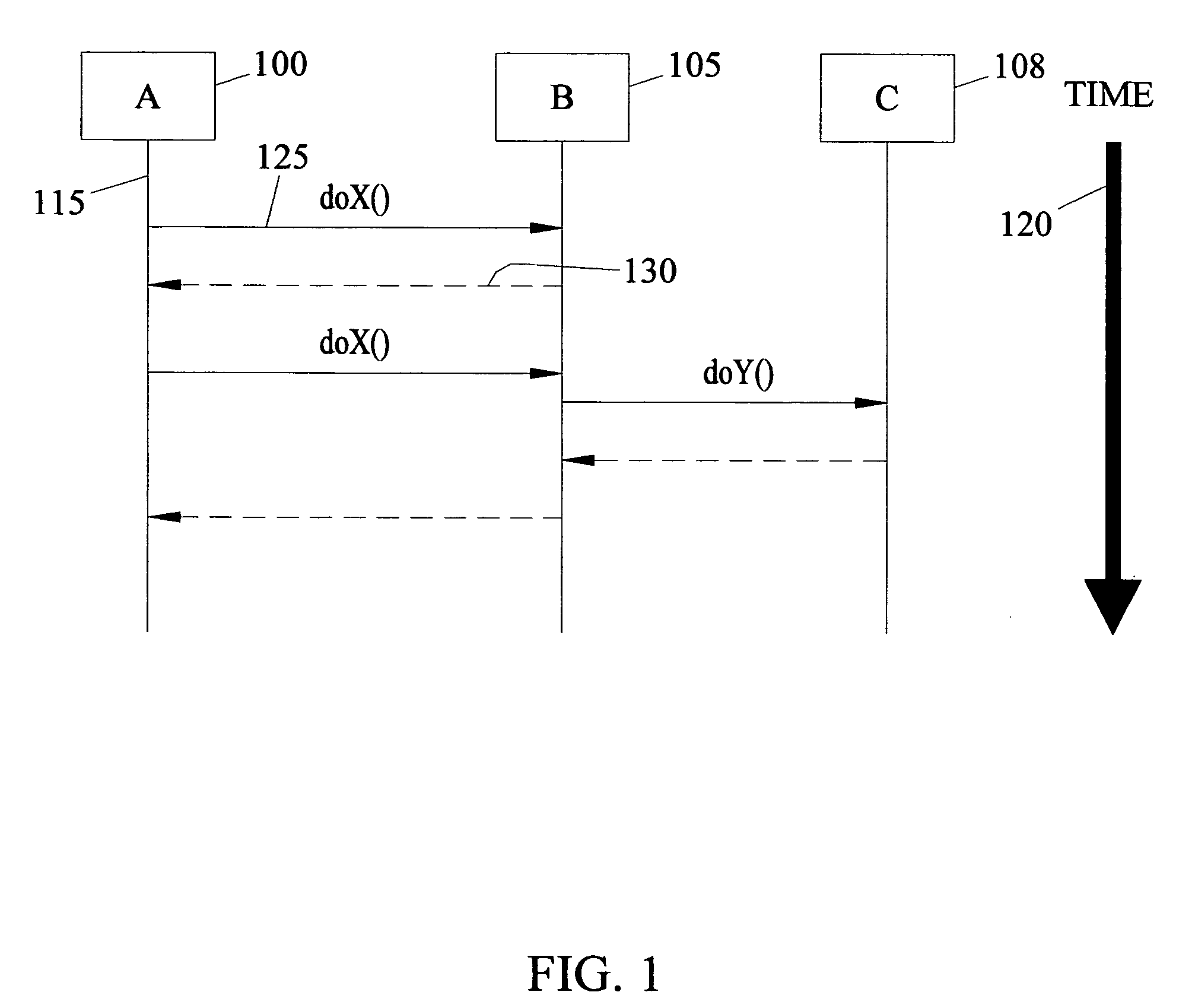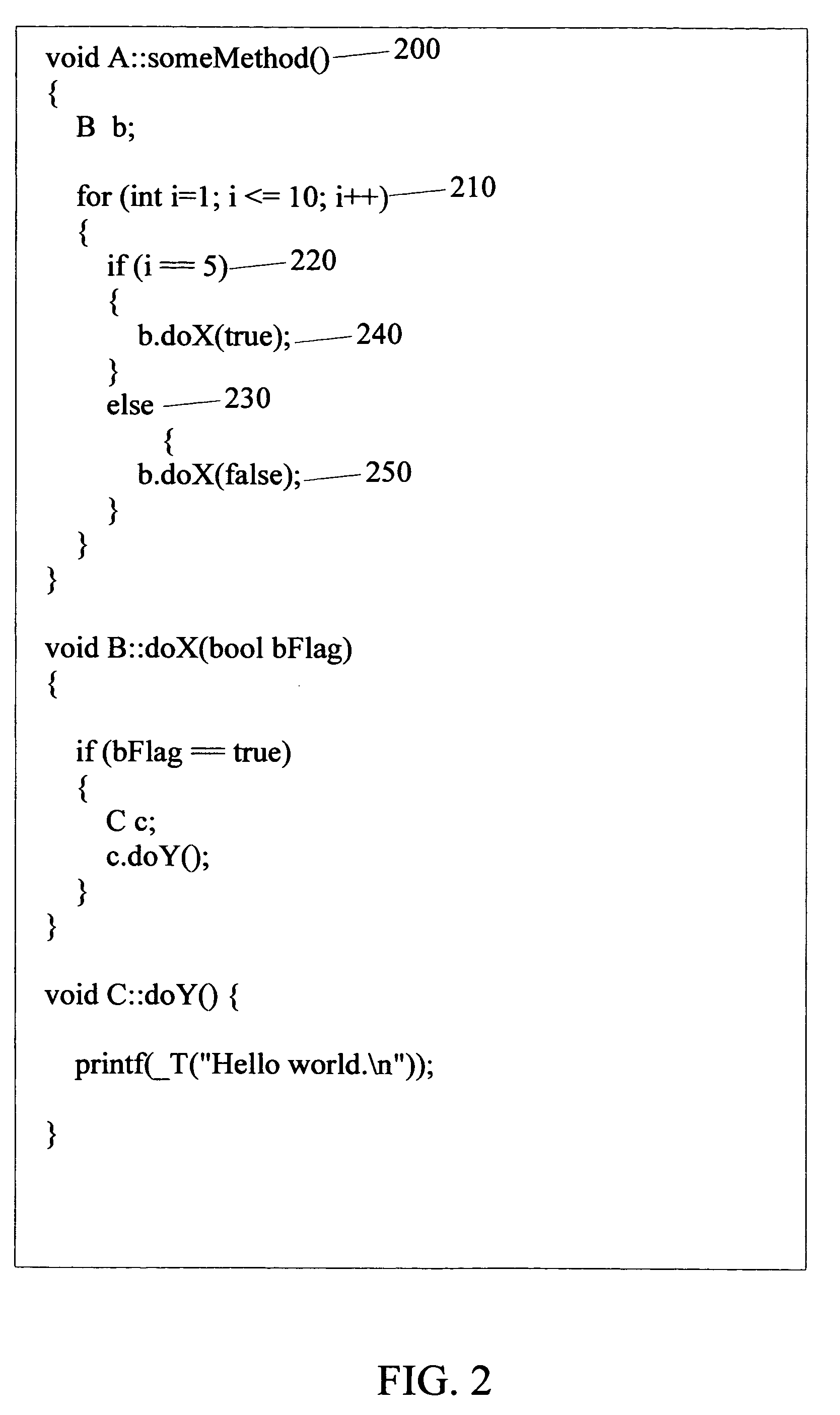Methods, systems, and computer program products for summarizing operational behavior of a computer program
a computer program and operational behavior technology, applied in the field of analysis of computer programs, can solve the problems of increasing difficulty in generating a dynamic view of the system, increasing the difficulty of providing any assistance, and increasing the difficulty of analyzing the computer program. the effect of unnecessary processing and less efficiency
- Summary
- Abstract
- Description
- Claims
- Application Information
AI Technical Summary
Benefits of technology
Problems solved by technology
Method used
Image
Examples
Embodiment Construction
[0044] The following terms and definitions are used in explaining details of embodiments of the invention:
[0045] API—stands for application programming interface, a standard used by computer programmers to allow operating systems and software applications to understand one another.
[0046] breakpoint—a place in a source code program that stops the debugger during program execution. Breakpoints aid in the testing and debugging of programs.
[0047] C++—an object-oriented programming language based on the C language.
[0048] call or function call—an expression that moves the path of execution from the current function to a specified function and evaluates to the return value provided by the called function.
[0049] call stack—the list of procedures and functions currently active in a program.
[0050] call tree—a data structure used to record a computer program's function call sequence. Also, a display that documents function usage hierarchy.
[0051] class—one of the key concepts in object-o...
PUM
 Login to View More
Login to View More Abstract
Description
Claims
Application Information
 Login to View More
Login to View More - R&D
- Intellectual Property
- Life Sciences
- Materials
- Tech Scout
- Unparalleled Data Quality
- Higher Quality Content
- 60% Fewer Hallucinations
Browse by: Latest US Patents, China's latest patents, Technical Efficacy Thesaurus, Application Domain, Technology Topic, Popular Technical Reports.
© 2025 PatSnap. All rights reserved.Legal|Privacy policy|Modern Slavery Act Transparency Statement|Sitemap|About US| Contact US: help@patsnap.com



